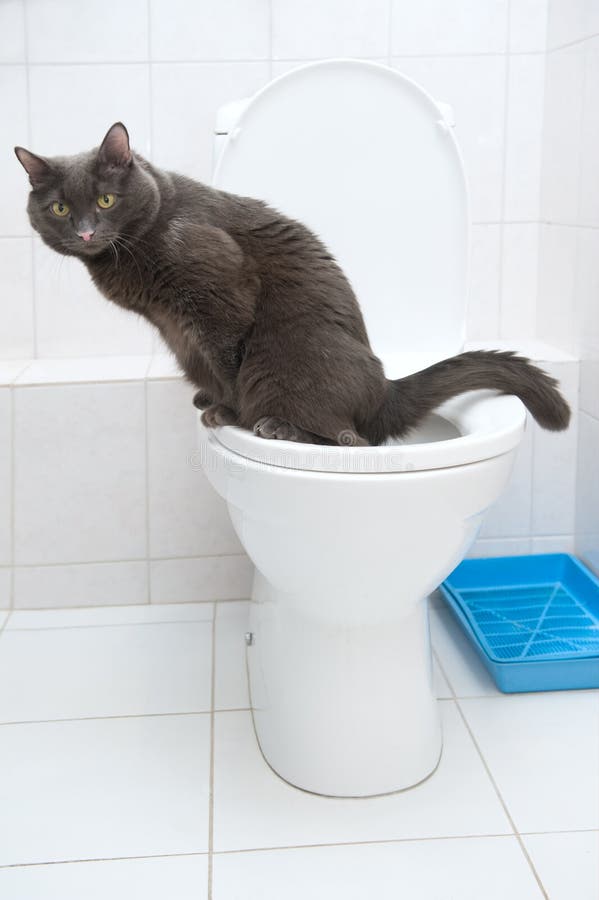The Dangers of Flushing Cat Poop Down Your Toilet - Tips for Safer Handling
The Dangers of Flushing Cat Poop Down Your Toilet - Tips for Safer Handling
Blog Article
Almost everyone may have their private conception in relation to Can You Flush Cat Poo or Litter Down the Toilet?.

Introduction
As pet cat proprietors, it's important to bear in mind exactly how we get rid of our feline good friends' waste. While it may appear hassle-free to purge feline poop down the commode, this practice can have detrimental consequences for both the setting and human health and wellness.
Environmental Impact
Flushing pet cat poop introduces damaging microorganisms and parasites into the supply of water, positioning a substantial threat to marine ecosystems. These contaminants can adversely impact aquatic life and compromise water quality.
Wellness Risks
Along with ecological problems, flushing pet cat waste can likewise posture health and wellness dangers to human beings. Feline feces might have Toxoplasma gondii, a parasite that can trigger toxoplasmosis-- a potentially serious ailment, specifically for expectant females and individuals with weakened immune systems.
Alternatives to Flushing
The good news is, there are more secure and a lot more responsible methods to throw away cat poop. Think about the following choices:
1. Scoop and Dispose in Trash
The most common approach of disposing of feline poop is to scoop it right into an eco-friendly bag and throw it in the garbage. Make sure to utilize a committed clutter scoop and get rid of the waste promptly.
2. Usage Biodegradable Litter
Select biodegradable cat litter made from materials such as corn or wheat. These clutters are eco-friendly and can be safely gotten rid of in the trash.
3. Bury in the Yard
If you have a yard, consider hiding feline waste in a marked area far from vegetable yards and water resources. Make certain to dig deep adequate to prevent contamination of groundwater.
4. Set Up a Pet Waste Disposal System
Purchase a family pet waste disposal system especially developed for pet cat waste. These systems utilize enzymes to break down the waste, lowering odor and environmental effect.
Verdict
Responsible animal ownership expands beyond offering food and sanctuary-- it additionally involves proper waste administration. By refraining from purging feline poop down the bathroom and choosing alternate disposal approaches, we can reduce our ecological footprint and secure human health.
Why Can’t I Flush Cat Poop?
It Spreads a Parasite
Cats are frequently infected with a parasite called toxoplasma gondii. The parasite causes an infection called toxoplasmosis. It is usually harmless to cats. The parasite only uses cat poop as a host for its eggs. Otherwise, the cat’s immune system usually keeps the infection at low enough levels to maintain its own health. But it does not stop the develop of eggs. These eggs are tiny and surprisingly tough. They may survive for a year before they begin to grow. But that’s the problem.
Our wastewater system is not designed to deal with toxoplasmosis eggs. Instead, most eggs will flush from your toilet into sewers and wastewater management plants. After the sewage is treated for many other harmful things in it, it is typically released into local rivers, lakes, or oceans. Here, the toxoplasmosis eggs can find new hosts, including starfish, crabs, otters, and many other wildlife. For many, this is a significant risk to their health. Toxoplasmosis can also end up infecting water sources that are important for agriculture, which means our deer, pigs, and sheep can get infected too.
Is There Risk to Humans?
There can be a risk to human life from flushing cat poop down the toilet. If you do so, the parasites from your cat’s poop can end up in shellfish, game animals, or livestock. If this meat is then served raw or undercooked, the people who eat it can get sick.
In fact, according to the CDC, 40 million people in the United States are infected with toxoplasma gondii. They get it from exposure to infected seafood, or from some kind of cat poop contamination, like drinking from a stream that is contaminated or touching anything that has come into contact with cat poop. That includes just cleaning a cat litter box.
Most people who get infected with these parasites will not develop any symptoms. However, for pregnant women or for those with compromised immune systems, the parasite can cause severe health problems.
How to Handle Cat Poop
The best way to handle cat poop is actually to clean the box more often. The eggs that the parasite sheds will not become active until one to five days after the cat poops. That means that if you clean daily, you’re much less likely to come into direct contact with infectious eggs.
That said, always dispose of cat poop in the garbage and not down the toilet. Wash your hands before and after you clean the litter box, and bring the bag of poop right outside to your garbage bins.
https://trenchlesssolutionsusa.com/why-cant-i-flush-cat-poop/

I found that blog entry about Can You Flush Cat Poop Down The Toilet? while doing a search on the search engines. Please take a moment to distribute this blog posting if you appreciated it. I take joy in reading our article about Can You Flush Cat Poo or Litter Down the Toilet?.
Call Today Report this page